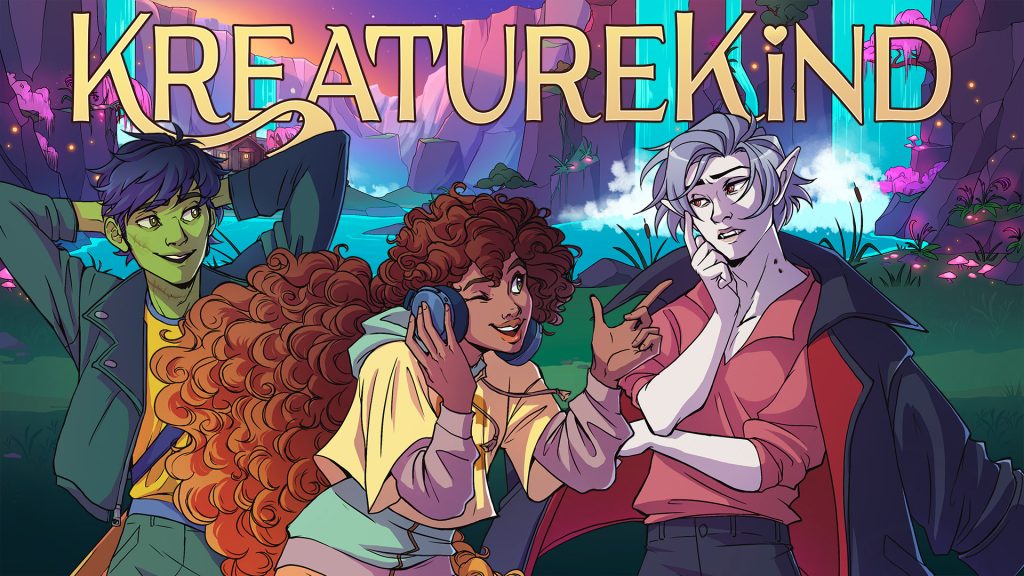Video games have often served as a medium for storytelling, offering narratives that reflect real-world issues or evoke emotional responses. With its recent launch on Xbox Series X|S, KreatureKind emerges as an innovative title that champions kindness and thoughtful dialogue over violence and combat. This unique approach not only sets it apart from traditional card battles but also promotes discussions on sustainability and activism, inviting players to immerse themselves in its distinct world.
The Philosophy Behind KreatureKind
At the heart of KreatureKind lies a philosophy of optimism and compassion. Developer Valiant Game Studio sought to create a narrative where the struggle for a better future is driven not by force but by understanding and open-hearted interaction. The aim is to provide an alternative to the often aggressive undertones found in many popular video games. “I started making KreatureKind because I wanted to tell a different kind of story – one where kindness prevails,” says the game’s creator. “In a world that feels too loud and cynical, I hope KreatureKind offers a space to slow down and play with purpose.” This vision aligns closely with contemporary movements advocating for social change through dialogue and empathy.
Game Mechanics and Strategy
Unlike traditional games where health points (HP) represent physical endurance, KreatureKind introduces the concept of Hypothesis Points. These points reflect the character’s openness to arguments, divided into emotional, rational, and factual categories, color-coded for clarity: pink, green, and blue, respectively. Each color indicates the opponent’s current vulnerability and resistance to specific types of arguments. The strategical element of the game hinges on players choosing the right cards to match their opponent’s current stances, making it a battle of wits rather than weapons.
- Pink (emotional): Opponents are open to emotional arguments but resistant to factual ones.
- Green (rational): Opponents lean towards rational arguments.
- Blue (factual): Opponents are susceptible to factual arguments.
This system not only enriches the gameplay but also promotes critical thinking and planning, compelling players to consider the order of their card plays carefully. As players advance through the game, they must adapt their strategies based on their opponents’ shifts in focus and vulnerabilities. In a recent development update, the creators noted, “We champion the idea that conversations can shape the future, and we are excited to see how players engage with these mechanics.”
The Role of Ability Cards
One of the most intriguing aspects of KreatureKind is the introduction of Ability Cards, which are unique to each of the seven playable characters. These cards enhance gameplay by offering both offensive and defensive capabilities, allowing players to strategize based on their character’s strengths. For instance, characters like Luka have specialized “Curse” cards that disrupt opponents’ strategies, while others fulfill essential roles like heals or supports.
In addition to enhancing individual characters, these Ability Cards can influence the game significantly when combined with other argument cards. Players can fill slots on Ability Cards with other plays to maximize their effects. As an example, a single-target card can become an area-of-effect move depending on the number of slots filled. This depth ensures a dynamic experience, as players must weigh their options carefully before committing to a strategy.
A Vivid World of Characters
Beyond its mechanics, KreatureKind is celebrated for its artistic design and character diversity. The game’s vibrant hand-drawn art and a curated lofi soundtrack contribute to an immersive environment, complementing the narrative’s focus on community and collaboration. Players will encounter a host of unique creatures and NPCs, each offering their insights and challenges, effectively enriching the story as players rally various factions to their cause.
In a nod to contemporary gaming culture, the game’s characters also draw inspiration from various fantastical realms, introducing players to colorful cryptids and even some “barely copyright-dodging” fantasy beings. This playful yet engaging character design facilitates relatable storytelling, as players navigate through quests that underscore the themes of sustainability and activism.
Community and Market Reception
The reception of KreatureKind has been predominantly positive, praising its innovative gameplay mechanics, engaging art style, and meaningful message. Industry experts have highlighted the game’s potential to resonate with audiences looking for unique experiences beyond traditional conflict-driven narratives. As the gaming community increasingly values titles that address poignant societal themes, KreatureKind stands as a testament to the intersection of entertainment and activism.
According to a recent survey by Statista, players are increasingly drawn to games that foster emotional connections and encourage positive social interactions. This trend suggests that KreatureKind may not only attract dedicated gamers but also those who seek games that promote cooperation and understanding in a digital format.
Conclusion
As players dive into the vibrant world of KreatureKind, they are met with a novel gaming experience that merges strategic card gameplay with heartfelt storytelling. By encouraging players to engage in meaningful conversations rather than conflict, the game presents a refreshing perspective on the potential of video games as a medium for social change. Whether you’re a seasoned veteran or new to card games, KreatureKind offers something for everyone, making it a worthy addition to any gamer’s library.
Are you ready to take on the challenge and join the ranks of activists in KreatureKind? The world is waiting for your words to shape a better future.

